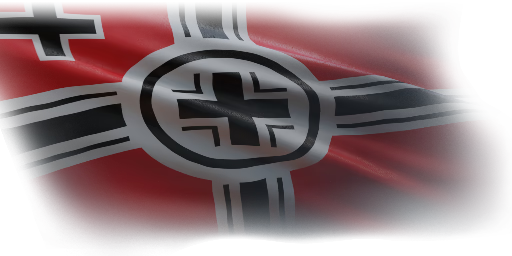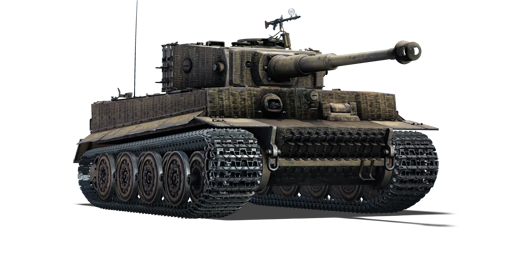

Ground Vehicles
Tiger E
III
Rank
AB
6.0
RB
6.0
SB
6.0
Battle rating
Germany
Research country
Heavy tank
Main role
40,000

Research
135,000

Purchase
General information
Survivability and armour
Armour
front / side / back
Hull
100 / 80 / 80 mm
Turret
100 / 80 / 80 mm
Visibility
111 %
Crew
5 persons
Support systems
Mobility
Max speed
Forward
4548 km/h
Backward
89 km/h
Power-to-weight ratio
12.210.819.415.8 hp/t
Engine power
7006191,113904 hp
Weight
57.3 t
Optics
Gunner
Commander
Driver
Optics zoom
2.5x–5.0x
—
—
Armaments
88 mm KwK36 cannon
Ammunition
92 rounds
Reload
basic crew → aces
9.6 → 7.4 s
Vertical guidance
-8 / 16°
Turret Rotation Speed
basic crew → aces
Horizontal
9.88.315.711.3 → 1411.922.416.2 °/s
Vertical
2.82.27.34.7 → 43.210.46.7 °/s
| Ammunition | Type | Armor penetration (mm) at a distance: | |||||
|---|---|---|---|---|---|---|---|
| 10 m | 100 m | 500 m | 1000 m | 1500 m | 2000 m | ||
| APCBC | 165 | 162 | 151 | 139 | 127 | 117 | |
| HE | 18 | 18 | 17 | 15 | 14 | 13 | |
| APCBC | 153 | 151 | 140 | 128 | 116 | 106 | |
| HEAT | 110 | 110 | 110 | 110 | 110 | 110 | |
| APCR | 211 | 207 | 191 | 172 | 155 | 140 | |
7.92 mm MG34 machine gun (coaxial)
Ammunition
2,400 rounds
Belt capacity
150 rounds
Reload
basic crew → aces
10.4 → 8 s
Fire rate
900 shots/min
| Belt | Belt filling | Armor penetration (mm) at a distance: | |||||
|---|---|---|---|---|---|---|---|
| 10 m | 100 m | 500 m | 1000 m | 1500 m | 2000 m | ||
| AP/AP/AP-T | 13 | 12 | 7 | 3 | 2 | 0 | |
7.92 mm MG34 machine gun
Ammunition
2,100 rounds
Belt capacity
150 rounds
Reload
basic crew → aces
10.4 → 8 s
Fire rate
900 shots/min
Vertical guidance
-10 / 25°
Horizontal guidance
-55 / 158°
Turret Rotation Speed
basic crew → aces
Horizontal
6353.6100.872.8 → 9076.5144104 °/s
Vertical
6350.4163.8104.8 → 9072234149.8 °/s
| Belt | Belt filling | Armor penetration (mm) at a distance: | |||||
|---|---|---|---|---|---|---|---|
| 10 m | 100 m | 500 m | 1000 m | 1500 m | 2000 m | ||
| AP/AP/AP-T | 13 | 12 | 7 | 3 | 2 | 0 | |
Economy
Repair cost
Basic → Reference
AB
1,948 → 2,529 

RB
2,094 → 2,718 

SB
2,866 → 3,720 

Crew training
39,000 

Experts
135,000 

Aces
550 

Research Aces
390,000 

Reward multiplier
AB / RB / SB
90 / 140 / 160 % 

154 % 

Total cost of modifications
35,000 

68,100 

Talisman cost
1,300 

Research order:
Mobility | |
|---|---|
Protection |
|---|
Firepower | |
|---|---|
Rating by players
You must play more than 3 battles for the last week and more than 10 battles in a vehicle to rate it.
Like:
302
Armor protection:
Not enough ratings
Survivability:
Not enough ratings
Mobility:
Not enough ratings
Armament:
Not enough ratings
Balance:
Not enough ratings
Tips & Tricks
This space is currently empty
Do you know any interesting vehicle features?
Loading...
No articles about this vehicle yet
Become the first author and get rewards!
Write a guide, tell about interesting historical facts, make a tutorial or simply an interesting post.
No more content